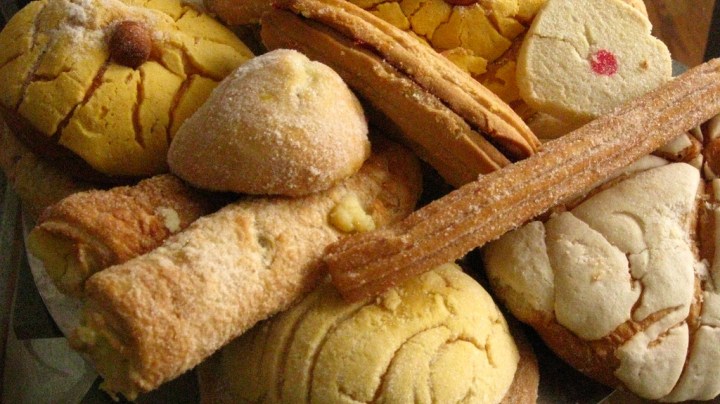This Illustrated Guide is an Ode to Mexico’s Delicious Breads

Creative Commons "Mexican Breads" by EvelynGiggles is licensed under CC BY 2.0
When you bite into a concha, you’re not only digging into a delectable vehicle for hot chocolate; you’re also experiencing a product that’s the result of a merging of cultures, colonization, and part of Mexico’s culinary identity. With Spain’s colonization also came the introduction of wheat to the Americas. As the conquistadores pushed their religion on indigenous populations, they used wheat to create the bread eaten during communion, Lucky Peach reports.
But it’s not just wheat that makes the bread. As Iberia and the Americas: Culture, Politics, and History notes, bread became more palatable with the addition of indigenous ingredients, like corn, and chocolate. And then when the French began arriving to Mexico, they introduced European baking techniques – further enhancing bread making in Mexico.
And though bread – in its many varieties – is as popular as tortillas in Mexico, a few factors have diluted the quality of bread across the country. As Iliana de la Vega told Lucky Peach, the plummeting economy in the 1970s drove bakers to make lower-quality breads. And with mass production of bread at grocery stores, the delicacies later took another hit. “In big bakeries, a lot of the breads taste very much the same,” Elena Reygadas told LP. “This homogenization process really took off when supermarkets started selling bread. At the same time, quirky, delicious breads from small-town bakeries – breads that also happen to be nutritious – have really been in decline.”
But they’re definitely still around, packing history and tradition into one small package. To honor Mexico’s bread making tradition, LP created an illustrated guide to 25 different breads you can find in the Latin American country. Check it out here.